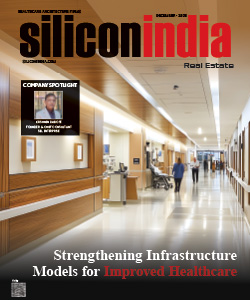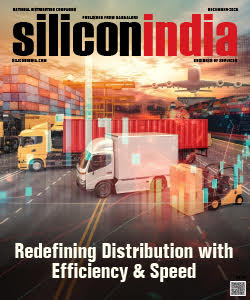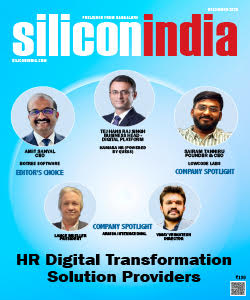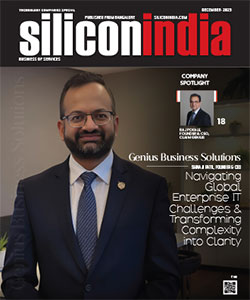Upskilling Existing Workforce is the New Go-To Hiring Strategy for Indian IT Firms

Having completed his Executive Education from IIM Ahmedabad, Srivatsan also holds a PG Diploma in Data Science, AI & ML from International Institute of Information Technology, Bangalore, Srivatsan is also a visiting Professor in PSG Institute of Technology and Applied Research, Coimbatore.
Siliconindia recently got a chance to interact with Srivatsan Santhanam, Vice President - Spend Engineering & Head - Concur R&D, SAP Labs India about the current recruitment trends and other related aspects. Below are the excerpts from the exclusive interview
What are your thoughts on the current recruitment landscape in India?
Currently, the Indian recruitment space is a basket of both challenges and opportunities. Talent scarcity and a fragmented talent base are two significant challenges faced by India in its quest for sustainable economic growth and development. While India is known for its vast pool of human resources, the issue lies in effectively harnessing and utilizing this talent to meet the demands of a rapidly evolving global economy. Despite having a large population, India faces a mismatch between the skills possessed by its workforce and the skills demanded by the industry. Also, despite promoting gender neutrality, women continue to face social and cultural barriers that limit their participation in the Indian workforce.
Drift towards Skill-based Hiring is a reality now, wherein employers prefer skills and competency-based hiring rather than solely relying on academic qualifications. Also, companies are leveraging freelancers, contractors, and remote workers to access specialized skills, reduce costs, and enhance flexibility. Lastly, India is witnessing a severe scarcity of skilled professionals in emerging technologies such as AI, data science, cybersecurity and deep-tech.
Explain some of the latest technologies that are currently disrupting the recruitment space, along with a few use cases.
Three major technology disruptions in recruitment space are Infusion of AI, Prompt Engineering and Automation. AI is revolutionizing talent recruiting by streamlining and enhancing various aspects of the recruitment process. Some of its major use cases include resume management, reduce bias in the hiring process, candidate skill matching and psychometric tests. Also, Large Language Models can help in recruiting & talent management in many useful way such as for answering candidate queries via chatbots, assisting them in interview preparation through mock interviews, and even generate comprehensive onboarding materials, training resources, employee handbooks and knowledge repositories for new hires. Similarly, automation has disrupted the entire recruitment process. Some of its major use cases include interview scheduling, compliance management and document processing, which has enabled businesses to optimize their entire recruitment process.
Tell us about the advantages and disadvantages of upskilling existing workforce instead of hiring new talent.
I believe this is as an 80:20 split. Upskilling existing manpower enables the company to retain their organization knowledge, have a grip on the hiring costs and make the workplace more psychologically safe for the employees. On the other hand, hiring new talent brings-in specific skills, knowledge and perspectives that may not exist within the current workforce, thus paving way for fresh ideas and innovations
What measures can the government and other regulatory bodies undertake to improve the recruitment space in India?
Aimed at upskilling and reskilling professionals in emerging technologies, NASSCOM FutureSkills is designed to address the skill gap in the IT industry and prepare the workforce for future job roles. Some of its key aspects include industry body & academia connect to make next gen of workforce employable, industry-relevant curriculum and industry exposure through internships.
Secondly, road shows are an effective strategy to better market Tier-II and Tier-III Indian towns as talent hubs, as they create awareness about the talent potential in those regions, as it helps in attracting job seekers, professionals, and entrepreneurs who may be interested in exploring opportunities beyond metropolitan areas. Also, labour law reforms in India are crucial for creating a conducive environment for economic growth, promoting decent work, and ensuring the welfare of both workers and employers. Some of the aspects like flexibility in employment contracts, ease of doing business, gender equality & diversity, and worker protection related reforms go a long way in providing a conducive environment for businesses to flourish.
The New Education Policy is another initiative that aims to transform the education system in India. One of its key objectives is to equip students with critical thinking, logical reasoning, and foundational skills. These initiatives are intended to prepare students for the challenges of the 21st century where critical thinking and logical reasoning are crucial for success in academic, professional and personal domains.
Lastly, the formalization of the gig economy is the future and it requires establishing regulations, policies and structures to provide legal protection, benefits and rights to gig workers. This involves implementing tax regulations and compliance mechanisms for gig workers to ensure that they fulfil their tax obligations, contribute to the overall tax revenue, and promote a level playing field with traditional employment structures.
How do you expect the industry to evolve in the days to come?
Purpose-driven hiring with a people-first approach emphasizes aligning the values, goals and purpose of individuals with those of the organization. This involves placing importance not only on the skills and qualifications of candidates, but also their values, aspirations, and potential contributions to the organization's mission. Also, Personalized Candidate Engagement will continue gaining momentum by allowing recruiters to customize the candidate experience as per their preferences and needs by using data-driven insights.
Similarly, the future of the hybrid work environment is shaping-up to be a prominent and transformative model of work like flexibility and work-life balance, remote work integration, in-office collaboration, and organizational culture to accommodate a distributed workforce. It further encourages a shift in performance evaluation towards outcomes and results rather than solely focusing on time spent in the office. Also, as the gig economy matures, it has the potential to create new avenues of employment, stimulate entrepreneurship, and contribute to economic growth.

.jpg)



